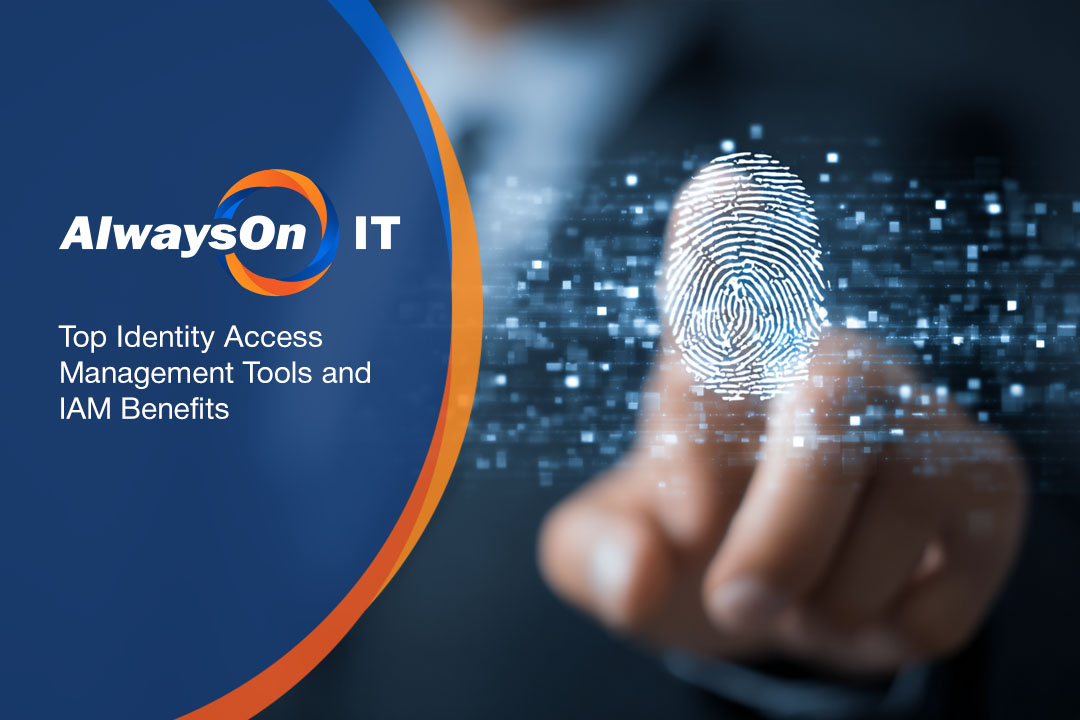3281 E. Guasti Rd, STE 700, Ontario, CA 91761
1712 9th Ave SW, Watertown, SD 57201

Managing who can access your business systems is more important than ever. Identity access management (IAM) helps you control access, protect sensitive data, and reduce the risk of breaches. In this blog, you'll learn what IAM is, how it works, key benefits, and how to implement it effectively. We'll also cover IAM security solutions, common challenges, and best practices to help you make informed decisions.
[.c-button-wrap2][.c-button-main2][.c-button-icon-content2]Contact Us[.c-button-icon-content2][.c-button-main2][.c-button-wrap2]
Identity access management is a framework that helps businesses manage digital identities and control who can access specific systems and data. It ensures that only the right people have the right level of access at the right time.
IAM systems work by verifying user identities and assigning access rights based on roles or policies. This helps prevent unauthorized access and improves your overall security posture. IAM is especially important for businesses handling sensitive identity information or operating in regulated industries.
IAM tools can also automate user provisioning, password management, and access reviews. This reduces manual errors and helps IT teams manage access to resources more efficiently.

Many businesses make avoidable mistakes when setting up IAM. Here are some of the most common ones and why they matter.
When users have more access than they need, it increases the risk of data leaks or misuse. Always follow the principle of least privilege—only give users the access they need to do their jobs.
Employees change roles or leave the company, but their access often stays the same. Failing to update access rights can leave your systems exposed. Regular audits help keep access current.
IAM depends on strong authentication. If your users can set weak passwords or reuse them, your IAM system becomes ineffective. Enforce strong password rules and multi-factor authentication.
Even the best IAM solution won’t work if users don’t understand it. Train your team on how to use IAM tools and why secure access matters.
Vendors and contractors often need temporary access. Without proper controls, this can become a security gap. Use IAM technologies to manage and monitor third-party access.
Outdated IAM systems can have vulnerabilities. Always keep your IAM software updated to ensure identity security and compliance.
IAM security solutions offer several benefits for growing businesses:

IAM is more than just a security tool—it supports business productivity. By managing user access efficiently, employees can get the tools they need without delays. IAM also reduces the workload on IT teams by automating routine tasks like password resets and access requests.
For businesses in regulated industries, IAM helps meet compliance requirements. It provides audit trails, access logs, and policy enforcement that are essential for passing security audits. IAM also supports secure collaboration with external partners by controlling how and when they gain access.
Setting up IAM the right way ensures it works for your business now and in the future. Here are the key steps to follow.
Start by identifying what systems and data need protection. Then decide who should have access and under what conditions. Clear policies are the foundation of any IAM system.
Select IAM tools that fit your business size and needs. Look for features like multi-factor authentication, user provisioning, and integration with your existing systems.
Assign roles based on job functions. This makes it easier to manage access rights and ensures users only gain access to what they need.
Make sure your IAM solution connects with your current applications, databases, and cloud services. This helps streamline identity management across platforms.
Educate employees on how to use IAM tools and why secure access is important. This improves adoption and reduces mistakes.
Use IAM capabilities to track access logs and detect unusual activity. Regular audits help maintain compliance and catch issues early.
As your business grows, your IAM needs will change. Review your policies and permissions regularly to keep your IAM system effective.

IAM systems are used in many ways to improve security and efficiency. For example, a company can use IAM to give new employees access to only the systems they need on day one. When someone leaves, their access can be removed automatically.
IAM also supports secure access for remote workers. With identity verification and role-based access control, employees can safely work from anywhere. Businesses can also use IAM to manage access for contractors or temporary staff, ensuring they only have access during the time they need it.
IAM solutions help enforce consistent policies across all systems, whether on-premise or in the cloud. This reduces the risk of gaps in your security and improves your ability to manage access rights.
To get the most out of your IAM system, follow these proven strategies:
Following these steps helps ensure your IAM implementation supports your business goals and keeps your systems secure.

Are you a business with 20 or more employees looking for a better way to manage access and protect sensitive data? If you're growing and need a secure, scalable solution, our team can help you implement identity access management that fits your needs.
At Trinity Networx, we specialize in IAM security solutions tailored for small to mid-sized businesses. We’ll help you choose the right tools, set up access policies, and train your team. Contact us today to get started.
[.c-button-wrap2][.c-button-main2][.c-button-icon-content2]Contact Us[.c-button-icon-content2][.c-button-main2][.c-button-wrap2]
IAM, or identity and access management, helps small businesses control who can access their systems and data. It ensures that only authorized users can gain access to sensitive information.
By using IAM tools, businesses can verify their identities and assign access rights based on roles. This improves identity security and reduces the risk of data breaches.
IAM systems provide centralized access control for both cloud and on-premise systems. This makes it easier to manage user access across different platforms.
With IAM, you can manage access to resources using one system. It also helps enforce consistent policies and track user activity across your digital environment.
A reliable IAM solution includes features like multi-factor authentication, user provisioning, and access reviews. These help manage access efficiently and securely.
It should also support role-based access control and integrate with your existing management system. This ensures smooth operations and better control access policies.
IAM technologies provide audit logs, access tracking, and policy enforcement. These features help businesses meet compliance standards like HIPAA or GDPR.
They also help verify their identities and ensure only approved users gain access to sensitive systems. This reduces the risk of non-compliance penalties.
IAM allows remote employees to access systems securely from anywhere. It uses identity verification and secure access protocols to protect your data.
With IAM, you can manage user identities and assign the right level of access. This supports productivity while maintaining strong security controls.
Start by identifying what systems need protection and who should have access. Then choose an IAM system that fits your business size and needs.
Use IAM tools to automate user access, enforce policies, and monitor activity. Regularly review and update your IAM implementation to keep it effective.